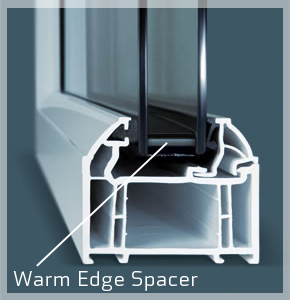With the temperatures starting to fall, homeowners across the UK begin ramping up their central heating systems in a bid to make the cold winter months more comfortable and their homes nice and cosy. It is precisely at this time that a common household frustration rears it's ugly head: condensation.
Condensation build up on windows, doors, conservatories and even walls is not only unsightly but can also prove a real nuisance, causing damage to paintwork, curtains, wall coverings and window cills and thus creating additional household maintenance issues in its wake. It is a problem for many homeowners and can occur in any type of building.
With the improvements in home insulation technology and associated products which we have seen grow in popularity over recent years, from cavity wall and loft insulation to underfloor heating, chimneys being blocked up and energy rated double glazing installed our homes are now warmer and better insulated than ever before. However, whilst these products help to create warmer rooms and a more comfortable living environment, they often reduce the amount of ventilation in the home. Previously, when the house wasn't so well insulated the warm air which is naturally produced every day through normal living activities was able to escape through draughty or poorly insulated windows and doors, up the chimney or roof and via other outlets; now however, with the home being more thermally efficient this warm air can often find it more difficult to escape, creating the ideal environment for condensation formation.
What is condensation?
Essentially condensation occurs when warm air (which holds more water vapour than cold air) comes into contact with a surface at a lower temperature than itself and water droplets are formed. Warm air is naturally produced in your home every day through a combination of everyday activities, for instance breathing or another good example might be the steam cloud from boiling the kettle which is then absorbed into the atmosphere and instantly becomes invisible; the warmer the air, the more water vapour it can hold. - But as with most things, there is a point where the air simply cannot absorb any further moisture and is said to become 'saturated'. When this saturated air comes into contact with a colder surface, often (but not always) the glazing in your home's windows and doors, the air is chilled and its excess water vapour is dispersed onto that colder surface, and depending on the quantity of water vapour, mist or in excessive instances of water vapour condensation occurs.
Try this at home: an everyday example of condensation formation is when you breathe onto a mirror; condensation appears due to the exhaled air being saturated with water vapour and at a warmer temperature than that of the mirror.
There are four main factors concerning the formation of condensation:
1) Water vapour content of the air
2) Inside home temperature
3) Outside temperature
4) The difference between inside room temperature, external temperature and the glazing
Common (and often overlooked) culprits that cause condensation on windows:
1) Drying clothing indoors
2) Indoor heaters
3) Indoor plants
4) Newbuild property: did you know that the bricks, timber, concrete and other materials used to construct an average 3-bedroomed house absorb about 7000 litres of water during construction. Much of this is dissipated into the indoor atmosphere during the drying out period and can be a common cause of condensation in newly built homes.
How can double or triple glazing help reduce condensation?
Double glazing and triple glazed windows and doors are one of the UK's most popular products for improving the homes' energy efficiency and thermal performance. Double or indeed triple glazing is an insulator, designed to significantly reduce the occurrence of heat loss from the inside to the outside of a property.
Deemed so effective at improving the homes thermal efficiency that all current Building Regulations specify all new or replacement windows must meet a minimum performance criteria. This requirement can only be achieved with the installation of energy efficient windows and doors.
The Sevenday range of energy efficient windows can reduce condensation by as much as 80%
The advanced technology and components that go into making the Sevenday window result in lower heat loss at window edges which in-turn makes our glass typically 3-4°C warmer than those which use a metal spacer bar - cutting condensation formation by up to 80%. Using high performance gaskets, our double glazing reduces noise pollution, too.
How do Sevenday Windows reduce condensation?
Up to 80% of a double glazed window’s energy loss occurs at the glass edge. Ordinary aluminium spacers are highly conductive. In winter they let heat escape and encourage condensation. That’s why our windows feature a high performance warm edge NON metal spacer.

The Sevenday warm-edge spacer bar is produced using an advanced
composite construction and is up to up to 22x more efficient at preventing heat transfer around window edge. It also has a 60-75% lower vapour transmission rate, increasing window service life. In thermal efficiency tests with identical glazing specifications, windows using this warm-edge spacer outperformed windows using aluminium or foam.
Slim and reflective, our warm-edge spacer doesn’t obstruct sightlines like some aluminium spacer bars and instead echoes the frame colour. Tested to EN1279, Sevenday windows join over 50 million windows worldwide already using Warm Edge spacer technology.